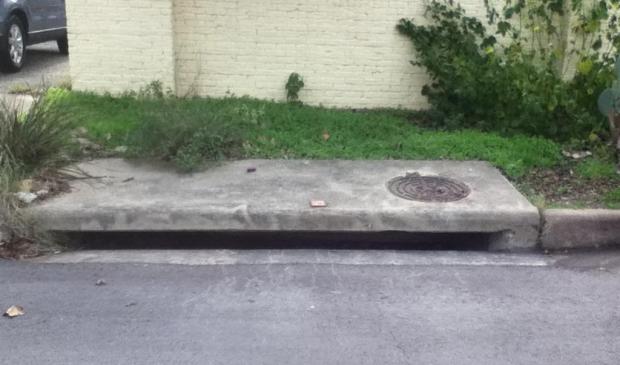City reveals new drainage fee structure
Thursday, December 4, 2014 by
Tyler Whitson Austin Watershed Protection Department staff publicly presented its proposed restructure of the drainage fee for the first time Wednesday, saying that it is fairer and more equitable to customers than the current flat fee.
Watershed Protection Director Victoria Li told the Environmental Board that the proposed structure is based on the impact that each property has on the drainage system, does not distinguish between types of land uses like commercial, residential or industrial, and is easier for customers to understand and accept than the current structure.
Li said that Watershed Protection would now begin stakeholder meetings on the proposed structure, which will be followed by public meetings. She hopes City Council will approve it in June of next year so that it can go into effect Oct. 1 and coincide with the start of Fiscal Year 2016.
The drainage fee provides the bulk of the money used to finance Watershed Protection projects.
In June, a judge ruled that the city’s flat drainage fee was unfair to people living in multifamily housing and breaks a section of Texas Local Government Code that requires that municipalities “offer drainage service on nondiscriminatory, reasonable and equitable terms.” The city filed an appeal Oct. 2.
One of the most significant changes that staff is proposing is that multifamily property owners or their representatives would be responsible for paying the drainage fee, which they would presumably collect from tenants. Li called this a “major departure from the way the drainage charge is currently collected.”
The proposed structure removes the distinction between residential and nonresidential property. It also removes a distinction between customers living in “high-rise” and “low-rise” apartments that results in high-rise dwellers paying less than low-rise dwellers. Board Member James Schissler noted that this has been an issue that the city needs to resolve.
The city would calculate each customer’s monthly fee based on three parameters that vary depending on his or her property or rental property. These are impervious area, lot size and the percentage of a lot that is covered with impervious area.
Impervious area is land covered by materials through which rainwater cannot easily penetrate, such as concrete. It contributes to runoff and flooding, and generally has a greater impact on the city’s drainage infrastructure than pervious area, such as grass.
The calculation takes into account Watershed Protection’s findings that properties with a higher proportion of impervious area to lot size produce higher stormwater runoff volume.
The new rate structure would retain the Customer Assistance Program, which reduces charges for customers with greater financial need.
It would also take into account a base rate that would be calculated annually based on the city’s projected revenue requirements and the total amount of impervious area for all nonexempt property.
Staff provided a few examples of specific properties to illustrate how the proposed structure would result in different monthly fees compared to the current structure.
In an example comparing two single-family residences, a customer living in a small house on a small lot would pay $7.15 per month rather than $9.80, while a similar customer with very large structures on a large lot would pay $20 per month rather than $9.80.
In an example comparing two multifamily residences, the owner of a medium-density apartment complex consisting of 197 units would pay $737 per month rather than $1,931, and the owner of a high-density apartment consisting of 220 units would pay $636 rather than $1,078.
If the owner were to divide the fee evenly among tenants, each tenant in the first example would pay about $3.74, while each tenant in the second example would pay about $2.89.
Staff noted that the proposed fee structure removes a discount for customers who have and maintain detention ponds on their properties. Schissler criticized this provision.
“For those apartments and commercial businesses that have spent the money and complied with regulations to build water quality ponds and detention ponds and have to pay the cost of maintaining them — I think they should continue to get the discount,” said Schissler.
Board Member Robert Deegan agreed, saying that if the city was trying to equitably assess fees based on impacts to the drainage system, on-site facilities that mitigated those impacts should be taken into consideration.
“I think it’s worth considering to try and find a way to provide that credit — both from a fairness perspective and to see if it could serve as some sort of an incentive if people were to go above and beyond in developing projects by putting more water quality and detention than code required,” said Deegan.
You're a community leader
And we’re honored you look to us for serious, in-depth news. You know a strong community needs local and dedicated watchdog reporting. We’re here for you and that won’t change. Now will you take the powerful next step and support our nonprofit news organization?








